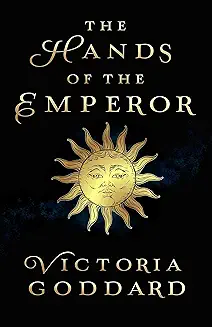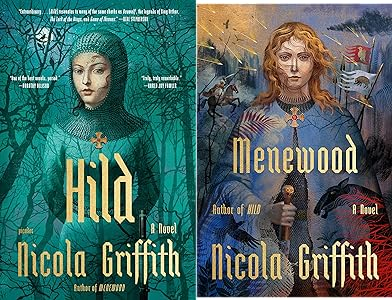Pick a detail
A post from Jane Friedman’s blog: One Well-Chosen Detail: Write Juicy Descriptions Without Overwhelming Your Reader
Have you ever read a description in a book and actually stopped to say to yourself, “Dang, that’s good.” And then maybe read it again? If so, you’ve probably also read a book where you found yourself mumbling, “I really don’t need to know every detail about this guy’s library/tools/muffin recipe” as you flip a few pages to find where the story picks up again.
It takes practice to write immersive descriptions that draw readers in, without going overboard so that we bore them and lose their attention. It’s one of the more delicate elements of craft. … Master film editor Walter Murch, once said “…trust one, well-chosen detail to do the work of ten.” Part of digging deep for unique and interesting details is removing any excess wording that would weigh your story down.
More at the linked post, with examples. It’s a short post, and to be honest, I’m not crazy about the examples presented. I mean, here’s the first example presented as great description:
His close-cropped skull was indented on one side as by the corner of a two-by-four. In the crevice formed by his brow and cheekbones, his eyes glinted like dimes lost between sofa cushions.
I’m not a big fan. The first sentence is fine. The bit about eyes like dimes lost between sofa cushions strikes me as over the top. Strained. Author trying too hard. All of that. I can’t see this as “one well-chosen detail.” It looks to me like too many analogies crammed into two sentences.
So, how about this?
On a cold April day, thanks to an awful card my awful Aunt ML had sent me, I was driving down Route 52 along the Ohio River toward my home town for the first time in fifteen years. I had a six-foot plush teddy bear riding shotgun (color: Guilt Red) while I told myself not to be ridiculous, everything would be fine, and look how beautiful the Ohio River is.
That’s the opening of Lavender’s Blue by Jennifer Cruisie and Bob Meyer. I know some of you have read it. I haven’t; it’s just toward the top of my TBR pile. But look at it and think about details. What do we have? The teddy bear. The landscape, no. The car, no. The protagonist, no. But we’ve got an image of the teddy bear. I think that’s a very clever detail. We also have a feel for the protagonist’s voice. That sure didn’t take long.
Here’s a different opening that you may recognize:
On a pretty day in autumn, when the oppressive heat had at last begun to give way to days that were merely warm and the green of the more timid trees had begun to turn to orange and yellow, Kuomat broke a firm rule. This rule was one he had made a good many years ago and rigorously enforced ever since: never attempt to rob a closed carriage or a canvas-covered wagon. No matter how tempting the target, no matter how rich the apparent yield, no matter how lightly guarded it might be. If a man couldn’t see straight through a target, always let it pass.
But these wagons—there were two—posed a considerable temptation. They were each driven by a woman; they were each accompanied by four mounted men. Another woman, obviously a lady, rode a pretty little mare with ribbons braided into its mane. The lady was lighthearted and cheerful and had a sweet voice, which one could judge because she was singing. Her husband rode near her. He was obviously a lord of some degree. His vest was bright sapphire; his shirt a darker blue, almost indigo; his boots embroidered with blue and brown thread; his hair long and braided with a blue ribbon. He looked almost as lighthearted as his pretty wife, though he was not, at least, singing.
This is the opening to Shines Now, of course. How many details do we have here? No details in the first paragraph. I would say that what we have there is a broad sketch The details come in the second paragraph, and why? Because those details are important for the decision Kuomat is going to make a minute later.
It’s not just about which details you describe or how you describe those details. It’s also when you describe them, and why. Why does the protagonist notice THAT detail, and why does the protagonist notice that detail NOW? The timing is, or can be, as important as the choice of details or the words chosen to describe the details. Why the teddy bear? Because it’s eye-catching and unusual and tells us something about the protagonist and the problem.
Why the wagons and the people rather than the landscape? Because Kuomat has no reason to pay close attention to the landscape; it’s familiar and unimportant. It’s there because the story is opening somewhere and we need to know where, but we don’t need to know much about where. We do need to know about Kuomat and that he’s paying close attention to the wagons and the people with the wagons.
Sometimes description is there for plot reasons, and that can be really important. This is common, of course. That’s true of the openings above, and it’s also true throughout a book. You remember almost at the end of Tarashana, where that duel is fought beside the lake? The sunlight and clouds had to be mentioned several times before that duel took place in order for both to be important at the key moment. It would have been impossible to have that key moment happen without setting it up via description of the sky and light in the preceding paragraphs. (I hope that is sufficiently clear, while also being sufficiently free of spoilers. It’s a fine line to walk, I know.)
Sometimes description is there for some other reason. Sometimes it’s used to break up rumination or dialogue. If the protagonist is thinking about some problem, you can’t have just put in one long paragraph after another of thought. You have to break up those paragraphs with movement and description because if you don’t, that’s tiring for the reader and also you can lose the sense that the story is taking place in the world. You can break up thought or dialogue with description, just as you can break up description with thought or dialogue. It works both ways.
You can also use description to do characterization, because what the protagonist notices and any reaction to the surrounding world are characterization. I mean, we see that in Lavender’s Blue, in Shines Now, in every book, really. Ryo looks at the sky when he’s thinking, because of course he does. I mean, look at this:
A breeze came across the water, fragrant with the scents of cut hay and damp earth. The moonlight was dim, the Moon looking partly away from the summer country, but I turned on my side and gazed up at her until I felt calmer again. Then I thought again about everything that had happened.
The first sentence is there to keep the story set in the world. The second is doing the same job, keeping the story set in the world, but it’s also doing worldbuilding — metaphysics — and also characterization — Ryo looks at the sky, particularly at the Moon, because he’s upset, and he is trying to calm himself down so he can think.
Description does a lot of heavy lifting in a lot of different ways. I happen to be a fan of description, and although I may read through description fast during action scenes, when description is great, I notice and linger. Though I’m a fan of great prose, I don’t think description works as well when it’s as self-conscious as the eyes like dimes lost between sofa cushions. Is self-conscious the right word? Maybe I mean deliberately over the top, or maybe I mean too out far out of the ordinary to be credible. My point is: I don’t think anybody has genuinely thought eyes looked like or reminded them of dimes lost between sofa cushions, ever, in the entire history of the world.
Who are some authors who are especially great at description? Well:



And of course many other authors. If you have a favorite author who does especially beautiful description, drop the name in the comments!
Please Feel Free to Share:







The post Pick a detail appeared first on Rachel Neumeier.



